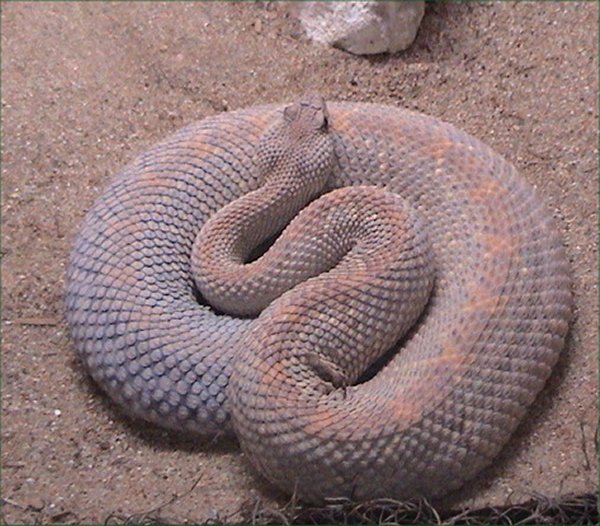Superregnum: Eukaryota
Regnum: Animalia
Subregnum: Eumetazoa
Cladus: Bilateria
Cladus: Nephrozoa
Superphylum: Deuterostomia
Phylum: Chordata
Subphylum: Vertebrata
Infraphylum: Gnathostomata
Superclassis: Tetrapoda
Cladus: Reptiliomorpha
Cladus: Amniota
Classis: Reptilia
Cladus: Eureptilia
Cladus: Romeriida
Subclassis: Diapsida
Cladus: Sauria
Infraclassis: Lepidosauromorpha
Superordo: Lepidosauria
Ordo: Squamata
Subordo: Serpentes
Infraordo: Caenophidia
Superfamilia: Viperoidea
Familia: Viperidae
Subfamilia: Crotalinae
Genus: Crotalus
Species: Crotalus unicolor
Name
Crotalus unicolor van Lidth de Jeude, 1887
Vernacular names
English: Aruba island rattlesnake
References
IUCN: Crotalus unicolor van Lidth de Jeude, 1887 (Critically Endangered)
Crotalus unicolor is a venomous pitviper species[4] found only on the Caribbean island of Aruba, off the coast of Venezuela. It is sometimes still classified as a subspecies of Crotalus durissus.
Description
Moderately sized, this species attains an adult length of approximately 90 cm, and weighs about one kilogram.[5] It is light brown, tan, or almost pink in color, reflecting the soil color of its native habitat, with darker brown diamond-shaped markings, but colors may vary from white to apricot, or brown to slate. The markings are sometimes nearly invisible, or only visible in a narrow stripe down the middle of the back.
Geographic range
The snakes are endemic to the island of Aruba.[3] They exist only in thornscrub and desert habitats on the southeastern half of the island.[6] The type locality given is "Aruba."[1]
Conservation status
C. d. unicolor in captivity.
These snakes are found only on the island of Aruba, where they are mostly limited to the rocky, dry southern tip of the island. Due to their extremely limited geographic range, about 230 animals are left in the wild, and the ever encroaching human habitation into their territory (with only about 25 square kilometers left undeveloped), the Aruba Island rattlesnake is among the rarest rattlesnakes in the world. Unfortunately, while exporting from the island is illegal, it has no other legal protection on the island either. The snake is now a part of the Species Survival Plan for captive breeding.
Feeding
Its diet consists of rodents, birds and lizards.
Reproduction
Crotalus unicolor at the Columbus Zoo and Aquarium.
Males reach sexual maturity in four years; females in five. After a gestation time of four months, females give birth to between five and fifteen live young at a time.
References
McDiarmid RW, Campbell JA, Touré T. 1999. Snake Species of the World: A Taxonomic and Geographic Reference, vol. 1. Herpetologists' League. 511 pp. ISBN 1-893777-00-6 (series). ISBN 1-893777-01-4 (volume).
U.S. Navy. 1991. Poisonous Snakes of the World. US Govt. New York: Dover Publications Inc. 203 pp. ISBN 0-486-26629-X.
Klauber LM. 1997. Rattlesnakes: Their Habitats, Life Histories, and Influence on Mankind. Second Edition. First published in 1956, 1972. University of California Press, Berkeley. ISBN 0-520-21056-5.
"Crotalus durissus unicolor". Integrated Taxonomic Information System. Retrieved 24 August 2007.
"Archived copy". Archived from the original on 2013-02-04. Retrieved 2013-03-03.
Campbell JA, Lamar WW. 2004. The Venomous Reptiles of the Western Hemisphere. 2 volumes. Comstock Publishing Associates, Ithaca and London. 870 pp. 1500 plates. ISBN 0-8014-4141-2.
van Lidth de Jeude, Theodorus Willem. 1887. On a collection of reptiles and fishes from the West-Indies. Notes from the Leyden Museum, 9: 129-139.
Retrieved from "http://en.wikipedia.org/"
All text is available under the terms of the GNU Free Documentation License


